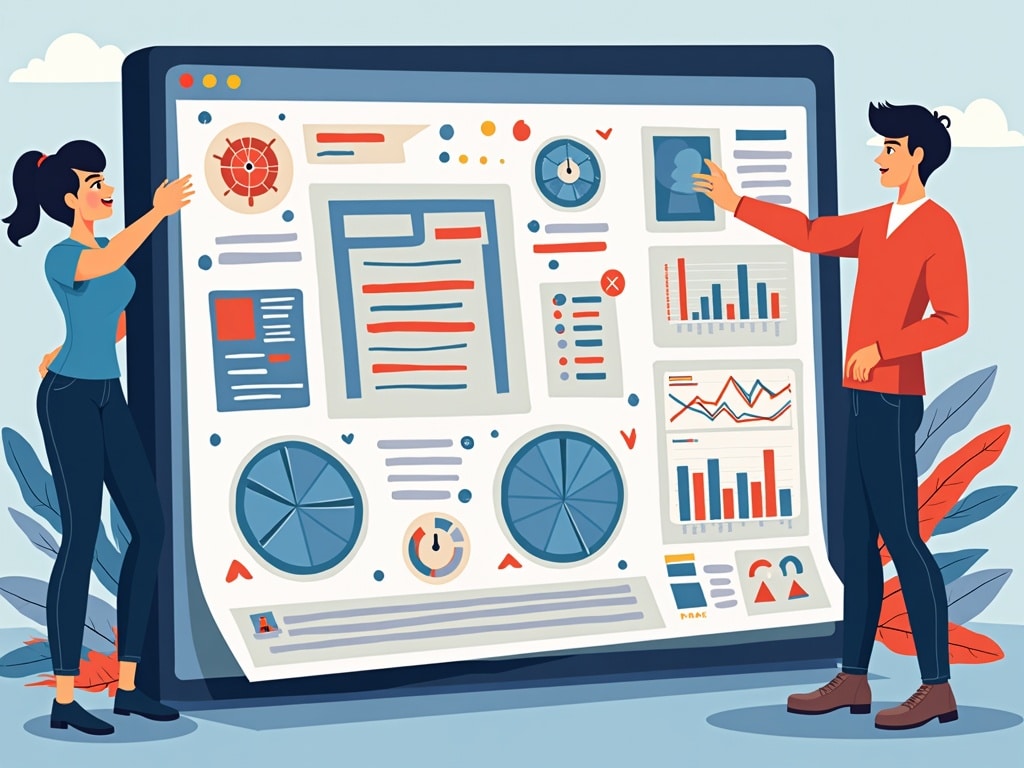The Ultimate List of Datasets for Building Your Data Science Portfolio
So, you’re looking to break into the world of data science, or maybe you’re just trying to sharpen your skills. Either way, you know building a strong portfolio is crucial. But where do you even begin? The answer, my friend, lies in the data itself. Finding the right dataset can be the difference between a forgettable project and a portfolio piece that lands you your dream job. Fear not! This comprehensive list is your launchpad for creating impactful data science projects.
Why a Strong Portfolio is Essential for Data Scientists
Think of your portfolio as your data science resume on steroids. While a resume lists your skills and experience, a portfolio demonstrates them. It’s tangible proof that you can wrangle data, extract insights, and communicate your findings effectively. Here’s why it matters:
- Show, Don’t Tell: Employers want to see what you can do, not just hear about it.
- Demonstrate Problem-Solving: A portfolio showcases your ability to tackle real-world problems using data.
- Highlight Your Skills: You can tailor your projects to highlight specific skills you want to showcase, such as machine learning, data visualization, or statistical analysis.
- Stand Out From the Crowd: In a competitive field, a strong portfolio helps you differentiate yourself from other candidates.
- Spark Conversation: Portfolio projects provide excellent talking points during interviews.
What Makes a Good Dataset for a Portfolio Project?
Not all datasets are created equal. A good dataset for a portfolio project should be:
- Interesting: Choose a topic you’re genuinely interested in. This will make the project more enjoyable and your passion will shine through.
- Relevant: Select a dataset that aligns with your career goals. If you want to work in healthcare, focus on healthcare-related data.
- Manageable: Don’t bite off more than you can chew. Start with smaller, well-structured datasets and gradually work your way up to more complex ones.
- Clean (or Cleanable): While real-world data is often messy, avoid datasets that are completely unusable. Look for datasets with clear documentation and a reasonable level of cleanliness.
- Versatile: Choose a dataset that allows you to explore different analytical techniques and create a variety of visualizations.
The Ultimate List of Free Datasets for Portfolio Projects
Alright, let’s dive into the list! We’ve categorized these datasets to help you find the perfect one for your next project.
General Datasets
These datasets cover a wide range of topics and are suitable for beginners and experienced data scientists alike.
- Kaggle Datasets: Kaggle is a goldmine of datasets covering everything from Titanic survival to credit card fraud detection. They also host competitions where you can test your skills against other data scientists. (kaggle.com/datasets)
- UCI Machine Learning Repository: A classic resource with a wide variety of datasets suitable for machine learning tasks. (archive.ics.uci.edu/ml/index.php)
- Google Dataset Search: A search engine specifically for datasets. It indexes datasets from various sources across the web. (datasetsearch.research.google.com)
- Awesome Public Datasets: A GitHub repository curating a massive list of public datasets, categorized by topic. (github.com/awesomedata/awesome-public-datasets)
Government & Public Sector Datasets
Governments around the world are increasingly making their data publicly available. These datasets can be used to analyze social trends, economic indicators, and more.
- Data.gov: The US government’s open data portal. It contains a vast collection of datasets on a wide range of topics, from healthcare to education to climate change. (data.gov)
- UK Data Service: A comprehensive source of social, economic, and population data for the United Kingdom. (ukdataservice.ac.uk)
- European Union Open Data Portal: Access to data from EU institutions and agencies. (data.europa.eu/euodp/en/data/)
- World Bank Open Data: Data on global development indicators, including population, GDP, and poverty rates. (data.worldbank.org)
- WHO Data: World Health Organization data on health statistics, disease outbreaks, and more. (www.who.int/data)
Business & Finance Datasets
If you’re interested in business or finance, these datasets can be used to analyze market trends, predict stock prices, and more.
- Quandl: A platform for financial, economic, and alternative data. They offer both free and paid datasets. (quandl.com)
- Yahoo Finance: Historical stock prices and financial data. (finance.yahoo.com)
- FRED (Federal Reserve Economic Data): Economic data from the Federal Reserve Bank of St. Louis. (fred.stlouisfed.org)
- UCI Machine Learning Repository – Online Retail Dataset: A transactional dataset containing sales data from an online retail store. (archive.ics.uci.edu/ml/datasets/Online+Retail)
Social Media & Text Datasets
These datasets are perfect for natural language processing (NLP) projects, sentiment analysis, and social network analysis.
- Twitter API: Access to real-time and historical tweets. (developer.twitter.com/en/docs)
- Reddit API: Access to Reddit posts and comments. (www.reddit.com/dev/api/)
- IMDB Movie Reviews: A collection of movie reviews for sentiment analysis. (ai.stanford.edu/~amaas/data/sentiment/)
- SMS Spam Collection: A dataset of SMS messages labeled as spam or ham (non-spam). (archive.ics.uci.edu/ml/datasets/SMS+Spam+Collection)
Image Datasets
For those interested in computer vision, these datasets are invaluable.
- MNIST Database of Handwritten Digits: A classic dataset for image recognition of handwritten digits. (yann.lecun.com/exdb/mnist/)
- CIFAR-10 and CIFAR-100: Labeled subsets of the 80 million tiny images dataset. (www.cs.toronto.edu/~kriz/cifar.html)
- ImageNet: A large dataset of annotated images, commonly used for training deep learning models. (www.image-net.org) Note that while the full dataset requires access, subsets and pre-trained models are often available.

Project Ideas to Get You Started
Now that you have a list of datasets, let’s brainstorm some project ideas!
- Customer Segmentation: Use the Online Retail Dataset to segment customers based on their purchasing behavior.
- Sentiment Analysis of Movie Reviews: Analyze the sentiment of IMDB movie reviews to predict movie ratings.
- Spam Detection: Build a model to classify SMS messages as spam or ham.
- Stock Price Prediction: Use historical stock prices from Yahoo Finance to predict future stock prices.
- Predicting Housing Prices: Use a dataset of housing prices to predict the price of a house based on its features.
- Image Classification: Use the MNIST or CIFAR datasets to build a model that can classify images.
- Explore Crime Trends: Use publically available crime data to identify and visualize trends.
Data Cleaning and Preparation: An Important Step
No matter which dataset you choose, you’ll likely need to clean and prepare the data before you can start analyzing it. This involves tasks such as:
- Handling Missing Values: Deciding how to deal with missing data (e.g., imputation or removal).
- Removing Duplicates: Identifying and removing duplicate rows.
- Data Type Conversion: Converting data to the correct data type (e.g., converting a string to a number).
- Feature Engineering: Creating new features from existing ones.
- Data Normalization/Standardization: Scaling the data to a common range.
Tools and Technologies for Your Portfolio Projects
Here are some popular tools and technologies you can use for your data science portfolio projects:
- Python: A versatile programming language widely used in data science.
- R: Another popular programming language for statistical computing and data visualization.
- Pandas: A Python library for data manipulation and analysis.
- NumPy: A Python library for numerical computing.
- Scikit-learn: A Python library for machine learning.
- Matplotlib: A Python library for creating static, interactive, and animated visualizations.
- Seaborn: A Python library for creating informative and aesthetically pleasing statistical graphics.
- Tableau: A data visualization tool for creating interactive dashboards and reports.
- SQL: A language for querying and managing data in relational databases.
Consider setting up a github repository to store your project code.
Tips for Showcasing Your Portfolio Projects
Once you’ve completed your projects, it’s important to showcase them effectively.
- Create a Portfolio Website: Host your projects on a personal website or platform like GitHub Pages.
- Write Clear Descriptions: For each project, provide a clear and concise description of the problem you were trying to solve, the methods you used, and the results you obtained.
- Include Visualizations: Use visualizations to communicate your findings effectively.
- Share Your Code: Make your code publicly available on GitHub.
- Get Feedback: Ask other data scientists for feedback on your projects.
Beyond the List: Finding Your Own Niche Datasets
While this list provides a great starting point, don’t be afraid to venture beyond it and find your own niche datasets. Here are some tips for doing so:
- Explore Industry-Specific Websites: Many industries have their own websites that provide access to data.
- Follow Data Science Blogs and Forums: These are great places to discover new datasets and project ideas.
- Participate in Kaggle Competitions: Even if you don’t win, participating in Kaggle competitions can expose you to new datasets and techniques.
- Create Your Own Datasets: Consider collecting your own data through web scraping or surveys.
Final Thoughts: The Journey of a Data Scientist
Building a strong data science portfolio is an ongoing journey. As you gain more experience, you’ll want to continue adding new projects to your portfolio and refining your skills. The key is to stay curious, keep learning, and never stop exploring the world of data. So, pick a dataset, start coding, and build something amazing!
